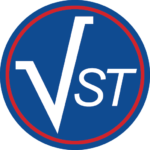ADAS – Advanced Driver Assistance Systems
ADAS capabilities
-
Predictive Pedestrian Protection
-
Lane Departure Warnings
-
Adaptive Cruise Control
-
Emergency Brake Assist
-
Rear-end Cross Traffic Alerting
-
Surround View
-
Road Departure Detection
-
Traffic Signal Recognition
-
Collision Warning
-
Full Vehicle Control
ADAS capabilities are highly complex and integrate a host of sensors as well as highly sophisticated software algorithms. The safety implications of these capabilities will vary depending upon the degree of automation, and under what conditions they are are used. For systems that are highly automated or use some form of artificial intelligence, the highest level of safety (defined as SIL 4 in ISO 26262) will apply. SAE International has defined the following levels of driving automation.
SAE International Definitions of Levels of Driving Automation
Level 0 – No Driving Automation
Level 1 – Driver Assistance
Level 2 – Partial Driving Automation
Level 3 – Conditional Driving Automation
Level 4 – High Driving Automation
Level 5 – Full Driving Automation
There is more reliance on software to carry out tasks and functions with each increasing level of driving automation. At the higher levels of automation, safety becomes a paramount concern and the level of rigor of software verification increases. Many of these software functions can be integrated onto one or more microprocessors where inter-relationships and dependencies make safety analysis more difficult. Verocel’s experience with complex, partitioned computer designs can help designers of automated features achieve their safety goals.
Verocel’s services and tools enable automotive software developers to comply with safety requirements for software called out in ISO 26262. Our background in certification of complex software and tools for the aerospace and industrial markets ensures that we are fully capable of addressing certification of autonomous systems for road vehicles.
ISO 26262 has special considerations for COTS elements that can be deployed in various systems and vehicles. These elements are referred to as Safety Element Out of Context (SEooC). For example, an operating system or communication protocol can be verified to SIL4 objectives on a reference hardware platform that can subsequently be used for an adaptive cruise control system, lane departure function, collision warning system and more.
Verocel has in-depth knowledge of certification of software components and produces a unique set of evidence and guidance materials to ensure that the initial approval and subsequent uses of the SEooC meet the requirements of ISO 26262.
Our certification evidence packages for software components come with all the required evidence of compliance and additional documentation to help integrators retain certification credit.
The following documentation may be provided by Verocel to support the certification of each customer project.
- ISO 26262 Safety Plan – describing the scope of certification credit and methods to achieve it.
- ISO 26262 Safety Manual – describing the exact credit achieved and identification of areas where partial credit has been achieved. The safety manual also documents what steps need to be accomplished to ensure proper integration of the approved component.
- Certification Evidence Integration Guide – describing what activities need to be accomplished by the integrator to achieve their safety goals and complete ISO 26262 compliance.
- Hazard Analysis or Vulnerability Analysis – describing the limitations of the software component, potential vulnerabilities that may impact safe operation, and how those vulnerabilities were addressed or how they need to be dispositioned by the integrator.





